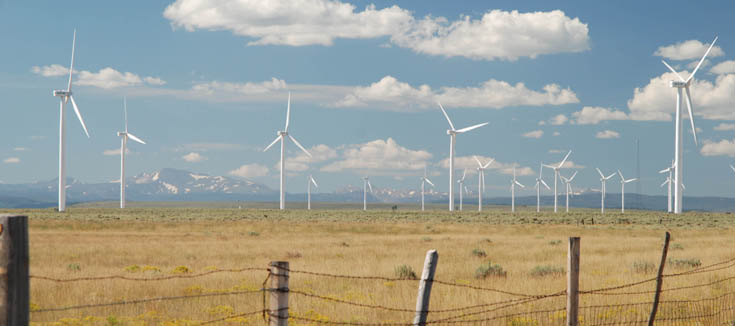A high-order accurate simulation of the WindPACT-1.5MW wind
turbine visualizes the wake propagation and transition to turbulence. This animation,
sped up by 2X real-time, shows a center plane cut of the wake with the rotation of
the wind turbine blades perpendicular to the plane. Uniform inflow from left to right
carries energy into the turbine which is then extracted to generate 1.5 mega-watts of power.
Lighter colors show higher tangential velocity to the inflow direction.
The blade-tip vortices form conical wake structures at various locations downstream of the wind turbine.
Between 2 (140 meters) and 3 (210 meters) rotor diameters downstream, the blade-tip vortices begin the
transition of near-wake to mid-wake through vortex pairing and mixing. The mid-wake region demonstrates
a mixing layer where vortex stretching occurs and large turbulent structures begin to develop. The far-wake region,
located beyond 560 meters downstream, shows fully turbulent flow where the wake structures merge and break down
into smaller turbulent eddies.
This simulation utilized upto 11,300 cores with over 650 million degrees-of-freedom and took nearly one
calender month to complete. Approximately 50 rotor revolutions were completed representing over two minutes
of physical sim- ulation time.
